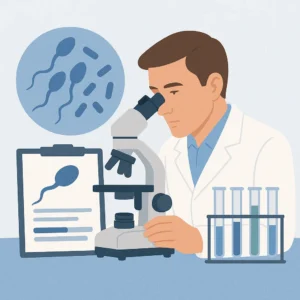So, in short, the answer is yes — but in all honesty the research is still developing for this, and both the gut microbiome and vaginal microbiome are very complex — so we are still figuring out the specifics!
The gut microbiome is something that has dominated much of the news and health care space — and while this is really important, it can mean that other microbiomes are neglected! Our body is made of many different microbiomes, and it makes sense that these can affect each other. We have learnt how the gut microbiome influences so many aspects of your health, so why should this stop at the vagina!?
Here are some of the ways that the gut microbiome and vaginal microbiome speak to each other:
- Immune Response
Both the gut and vaginal microbiomes play a key role in immune response. Both interact with the external environment and therefore are very key players in protecting against pathogens, infections and ultimately disease.
Research studies have shown that there can be interactions between the gut and vaginal microbiomes regarding infection — for example, with specific infections of the vaginal microbiome promoting subsequent dysbiosis (imbalance) in the gut microbiome.[1]
BV is an example. Such as the finding that the likelihood of BV was lower when Lactobacillius spp. Dominated both the vagina and rectum, rather than dominating just one or neither of these.[2]
2. Inflammation
Both the gut and vaginal microbiomes influence inflammation locally. The balance of either of these can trigger wider inflammation and inflammatory diseases such as obesity, IBS and diabetes.[3]
3. Source of pathogens
The gut has been implicated as a source of particular species that can result in vaginal dysbiosis. For example, the gut microbiome can act as a source of Candida spp. And BV-associated anaerobes.[4]
4. Hormonal Balance
We often hear how the foods that we eat and our gut microbiome composition can influence our hormones. This is important, as hormones also influence the vaginal microbiome.
For example — we describe the effects of a reduction in oestrogen on the vaginal microbiome in our blog post on GSM. This states that: A reduction in oestrogen results in a reduction of glycogen synthesis[5] from cells in the vaginal lining. Lactobacilli in the vaginal microbiome use this glycogen as an energy source, to produce lactic acid. Therefore, a reduction in oestrogen results often in a reduction of Lactobacillus species as well as less lactic acid capable of being produced. One of the major roles of Lactobacillus in the vaginal microbiome is to produce lactic acid. Lactic acid plays a major role in maintaining a healthy pH, protecting against pathogens, preventing inflammation, and maintaining balance[6]. Therefore, with less Lactobacilli present and less lactic acid produced, the vaginal environment is less stable and more likely to be in dysbiosis.”
Your gut microbiome can influence the balance of hormones such as oestrogen, therefore if we connect both of these pieces of information, we can assess that the gut and vaginal microbiomes are linked.[7]
5. Transfer of maternal vaginal microbiota to infant gut microbiota following vaginal delivery.
There is a very strong correlation between the gut microbiomes of new-born babies, and the vaginal microbiome of their mother, if they have been delivered vaginally.[8]
This transfer is really important for establishing a healthy and varied gut microbiome in the infant. For example, studies have shown that new-borns delivered via Caesarean are more likely to be at risk of chronic immune disorders including: allergies, celiac disease, type 1 diabetes, to name a few.[9]
Conclusions
No doubt, there are multiple ways in which the gut and vaginal microbiomes influence and are influenced by each other. This relationship is very complex, and still requires much research, however it is not unreasonable to assume that by balancing both of these local systems, you will reap the health and wellness benefits throughout your whole body!
Fariba Khonsari
[1] Kim DE, Kim JK, Han SK, Jang SE, Han MJ, Kim DH. Lactobacillus plantarum NK3 and Bifidobacterium longum NK49 alleviate bacterial vaginosis and osteoporosis in mice by suppressing NF-κB-linked TNF-α expression. J Med Food.(2019) 22:1022—31. doi: 10.1089/jmf.2019.4419
[2] Antonio MAD, Rabe LK, Hillier SL. Colonization of the rectum by Lactobacillus species and decreased risk of bacterial vaginosis. J Infect Dis. (2005) 192:394—8. doi: 10.1086/430926
[3] Amabebe E, Robert FO, Agbalalah T, Orubu ESF. Microbial dysbiosis-induced obesity: role of gut microbiota in homeostasis of energy metabolism. Br J Nutr. (2020) 123:1127—37. doi: 10.1017/S0007114520000380
[4] Sobel JD. Vulvovaginal candidosis. Lancet. (2007) 369:1961—71. doi: 10.1016/S0140-6736(07)60917-9
[5] https://www.fredhutch.org/en/news/spotlight/2022/06/vidd-srinivasan-jamanetw.html#:~:text=Following%20the%20onset%20of%20menopause,lactobacilli%20expansion%20in%20the%20vagina.
[6] https://www.ncbi.nlm.nih.gov/pmc/articles/PMC6008313/
[7] https://www.cell.com/trends/endocrinology-metabolism/fulltext/S1043-2760(21)00114-4?_returnURL=https%3A%2F%2Flinkinghub.elsevier.com%2Fretrieve%2Fpii%2FS1043276021001144%3Fshowall%3Dtrue
[8] Dominguez-Bello MG, Costello EK, Contreras M, Magris M, Hidalgo G, Fierer N, et al. Delivery mode shapes the acquisition and structure of the initial microbiota across multiple body habitats in newborns. Proc Natl Acad Sci USA.(2010) 107:11971—5. doi: 10.1073/pnas.1002601107
[9] Amabebe E. Does C-section impact on the early life microbiome and immune system? Age. (2018) 16:24—6. doi: 10.36866/pn.109.24







